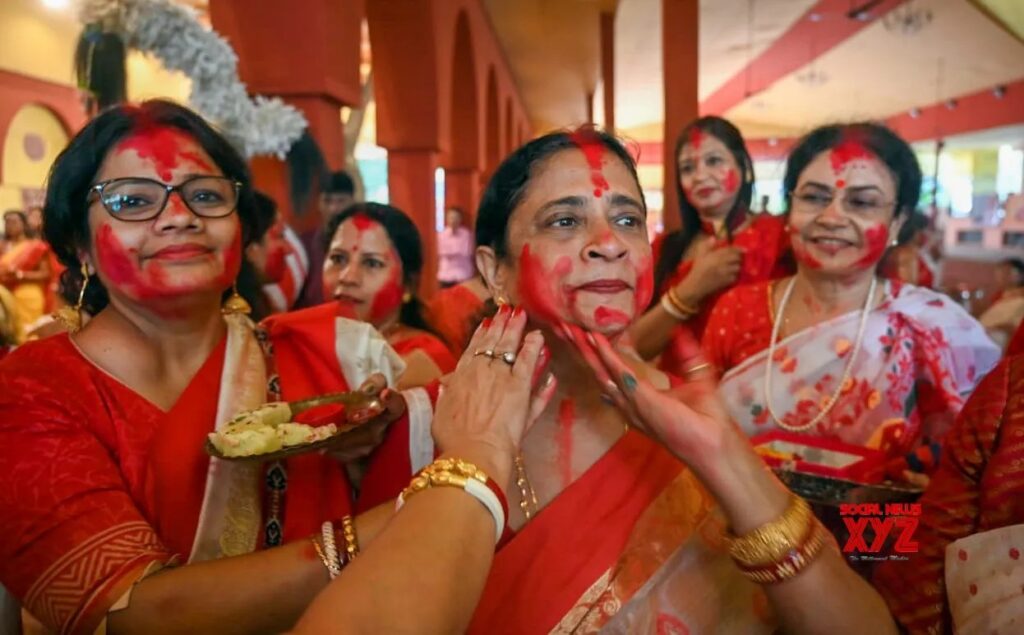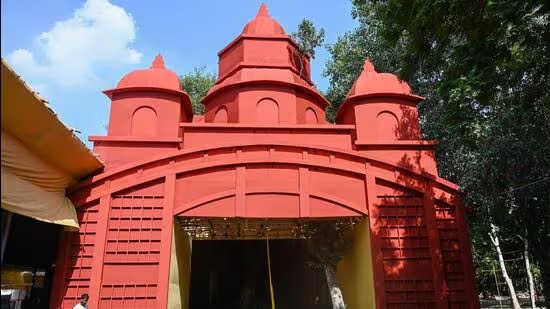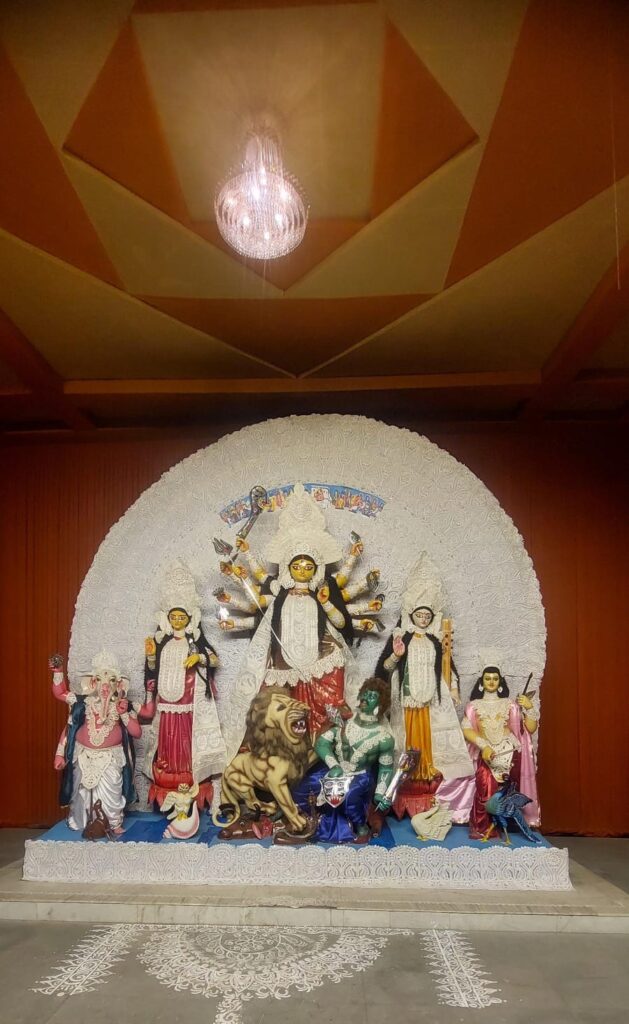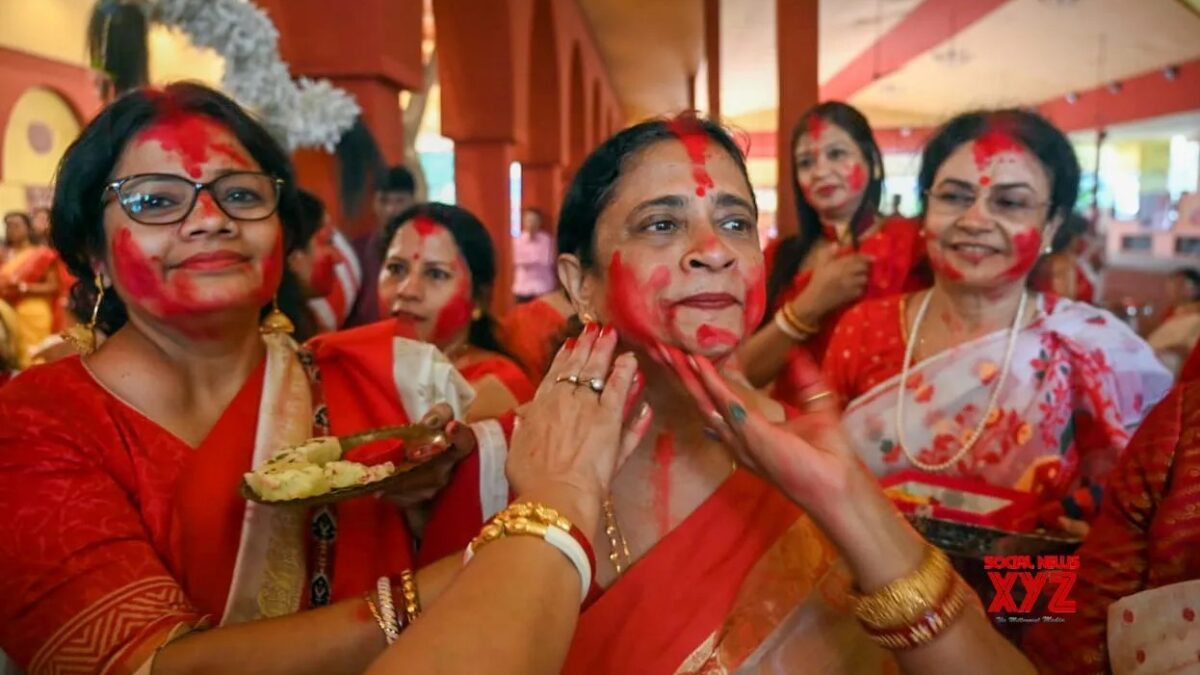Kalibari Mandir Unites Tradition And Creativity This Durga Puja
What can one say about the Durga Utsav that has not been said before? What new words can one pull out of the dictionary to describe the magic and atmosphere that this six day festival brings into the lives of us non-Bengalis? How should one describe the wonder and excitement one feels when the pandal gets completed and when the Pran Pratistha of the idols happens?
As with every year, the Kalibari Mandir grounds and the Horticulture Park underwent a remarkable transformation during Durga Puja.
It was the 42nd year of the celebration of Noida Kalibari Durga Puja in Sector 26. The beautiful Durga idol was crafted in the traditional ‘Daker Saaj’ style. All deities—Ma Durga, Lakshmi, Saraswati, Kartik, Ganesh, and Ashur—were placed against one common backdrop.
The festivities began on ‘Shashthi’ (Oct. 9), with the grand unveiling of Goddess Durga’s idol.
The traditional “Bhog” (khichuri, labra) offering to the Goddess was distributed among the devotees, who turned up in large numbers dressed in all their fineries for darshan.
On 10th Oct (Asthami), as part of Sandhi Puja, Goddess Durga was worshipped with 108 lotus flowers and 108 diyas were lit. A 5-foot-long garland of roses, marigolds, and lotus flowers was offered to the idols. On 11th Oct, Kumari Pujan was done on Navmi, where kanyas, or little girls dressed in a crimson red or bright orange saree, adorned with jewelry, were worshipped with an aarti, an offering of flowers, followed by seeking blessings.
Sindoor Khela, where married women apply sindur (vermillion) to the deity and each other, was held on 13th Oct. Thereafter, the idols were taken for immersion (visarjan) with great fanfare, symbolizing the return of the Goddess to Lord Shiva’s abode.
The entire festivity culminated with Bijaya Sammilani on October 19, where all the families came together to exchange greetings, shared warm embraces through “kolakuli,” and indulged in the festival’s delectable sweets and sumptuous meals. This modern tradition has streamlined the customs of the past, condensing the period of greetings and celebration to just one day, in contrast to the month-long festivities of yesteryear.
The five days of Durgautsav celebration seem to vanish all too quickly, even as it offers an immersive experience of Bengali heritage.





Popular Stories
The Water Couple’s Journey: From Cleaning Tanks to Complete Water Solutions!
Locals Felling Trees Near Sec A Pkt C
Winning Has Become a Habit for Divya
Is Green Park Heading Towards A Slum
Haphazard Parking, Narrow Walking Space In M Block Market
Geeta Atherya Spoke On Cacti & Succulents
Recent Stories from Nearby
- Summer of Discontent: Power Outage Woes @36 March 18, 2025
- Rang De! Let the Colours of Joy and Kindness Fill Our Lives! March 18, 2025
- The Unseen Hands : Honouring The Women Who Make Our Life Easier March 18, 2025
- दिव्य श्री राम कथा का नोएडा में आयोजन March 18, 2025
- Sumit Nagpal Strikes Gold at 31st National Masters Table Tennis Tournament March 18, 2025







